Alaska Glacier 1
Alaska is home to
more glaciers than just about anywhere else. There are so many glaciers, that
many are still unnamed. Of the estimated 100,000 glaciers in Alaska, only a
little over 600 are named. Come and enjoy some of the photos that I have taken
over the years on glacier visits. Dale Falk was the pilot on most of the aerial
photo sessions. Click on the thumbnail photo to see a larger
view.
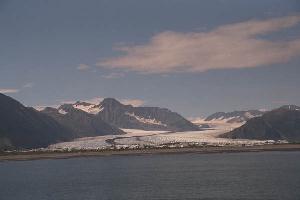 |
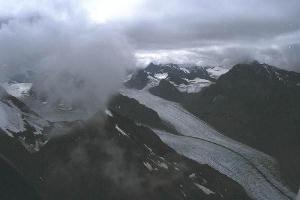 |
| Bear Glacier,
originating in the Harding Icefield in the Kenai Peninsula, is a Piedmont
Glacier that ends in Resurrection Bay. |
Eklutna
Glacier high in the Chugach Mountains, is a mountain glacier that gives
rise to Lake Eklutna, a major water source for Anchorage.
Alaska |
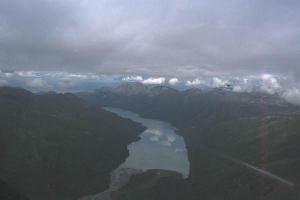 |
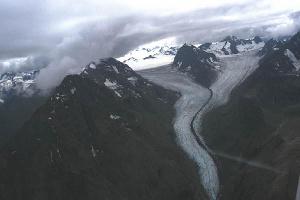 |
| Lake Eklutna,
looking west. Lower left corner of the lake shows the braided river
bed of the Eklutna River that feeds the lake. Look closely at the
rounded land mass to the right of the river bed and you can just make out
the gravel landing strip, Bold Airstrip. |
Born in the
snow fields high in the Chugach mountains, the glacier splits and goes
around a nunatek before joining again on the downhill side. The lateral
moraines from the nunatek join and form a medial moraine in the center of
the glacier. |
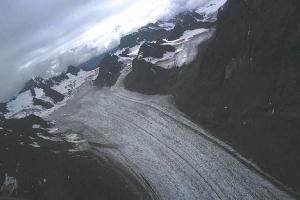 |
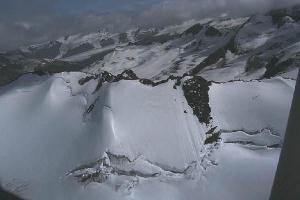 |
| Many small
glaciers merge to form a larger arm of the Eklutna Glacier |
Fresh snow on
ancient packed snow and ice cracks when the ice moves and
crevasses are formed. |
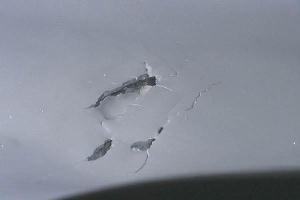 |
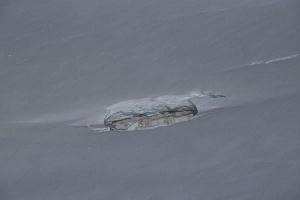 |
| The
wintertime, flat, featureless and snow covered mass of the glacier
can hide many dangers such as this crevasse. The snow bridge has fallen
and we can see part of the opening below. Knik Glacier. |
Another view
of a crevasse where the covering snow bridge has collapsed exposing the
depths of the crevasse. Layers of the glacier can be seen under the snow
covering. Knik Glacier. |
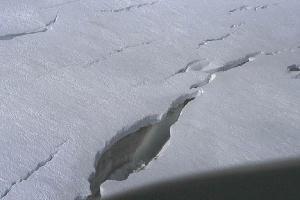 |
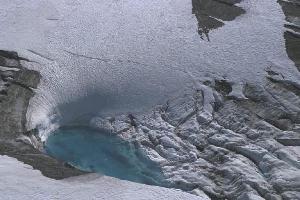 |
| Another view
of a crevasse forming as the winter snow becomes soft in the springtime
sun and collapses into the depths of the crevasse. Knik
Glacier. |
Melt water on
the surface of the glacier mirrors the blue of the glacier ice below.
Compressed, devoid of air bubbles, glacier ice looks blue. Knik
Glacier. |
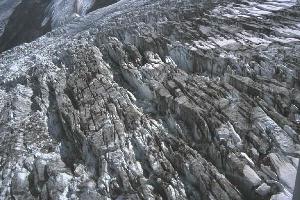 |
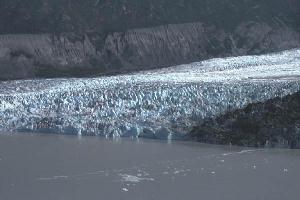 |
| Traveling
over uneven ground, the ice cleaves into plates of ice with deep crevasses
between them. Glaciers look smooth from a distance but are treacherous to
walk on and worse yet to land an aircraft. |
This glacier
terminates in a mountain lake in the Chugach Mountains. Note the deep blue
of the glacier and the cement gray of the silt laden waters that is
typical of glacial streams and lakes. |
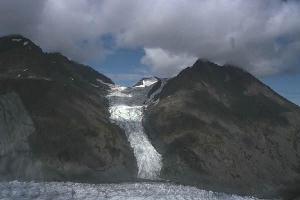 |
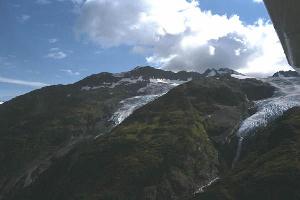 |
| Unnamed
tributary glacier to adds more glacial ice to the Knik Glacier |
More unnamed
tributary glaciers joining with the Knik Glacier in the Chugach
Mountains. |
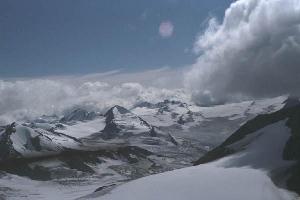 |
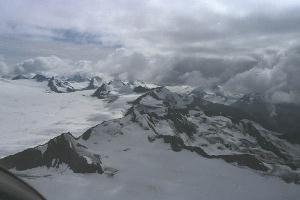 |
| Snow fields, accumulation zones for the glaciers,
high in the Chugach Mountains. |
Another view of snow fields in the Chugach
Mountains. Exposed mountain peaks are called
nunateks. |
Return to Photo Menu
Last update February, 2003







